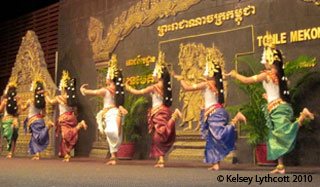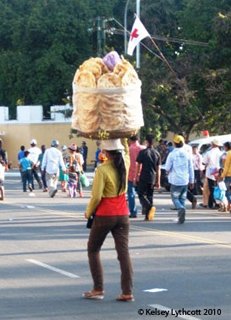Gorgeous Glutes
On our website, the top searches include, "glutes," "walking," and "butt." So I thought I'd take this chance to say a few words on the subject.
"Callipygian" is an English word of Greek origin. It means “of, pertaining to, or having beautiful buttocks”. The word, (pronounced kal-uh-PIDGE-ee-uhn), is derived from the Greek word “kalli” meaning beautiful, and “pyge” from the Greek word for rump or buttock.

Brazilian soldier on a swimming break in Cachoeira
In some cultures, a small, slim backside is preferred. But in others, it's a prominent rear end that stops traffic. Perceptions of beauty also vary over time. In Classical art, and also in the Renaissance aesthetic, the standard of female beauty included a wide posterior and hips. In recent decades, there's been an emphasis on very thin physiques, though this preference seems to be waning.

Cambodian dancers in a performance
Despite the changing nature of fashion, one thing that never goes out of style is a healthy body. So if you want to channel your inner callipygian beauty while also enhancing your overall wellness, try glidewalking. By squeezing and strengthening the gluteus muscles with each step, you'll walk your way to a regal rear!

Glidewalking in Cambodia
Facing the feet outward increases the chance of engaging the glutes, especially gluteus medius. If you're not feeling your glutes, it's probably because they're not used to working when you walk. Try taking just one step at a time and see if you can engage gluteus medius. Make sure your pelvis is tipped forward (anteverted) and try again (refer to Chapter 6 "Tallstanding" in 8 Steps to a Pain-Free Back for more details). Try pointing your back foot out a little and try again. Still flummoxed? Raise the back leg up off the ground with your back leg rotated outward. This should do it. Walk one step at a time until you can contract your glutes reliably. Then smooth it out into a walk.
How to Glidewalk:
1. When initiating a stride, relax the muscles around the hip joint of the leg moving forward and engage the lower buttock muscles of the back leg to propel the body forward.
2. Towards the end of the stride, use the gluteus medius muscle (at the upper outer quadrant of your buttock) of the back leg to gently land the front foot on the ground. Try to avoid free-falling to the ground. This technique strengthens the gluteus medius, giving you firmer, higher buttocks.
Onward and upward,
Esther

Comments
Add New Comment
Login to add commment
Login